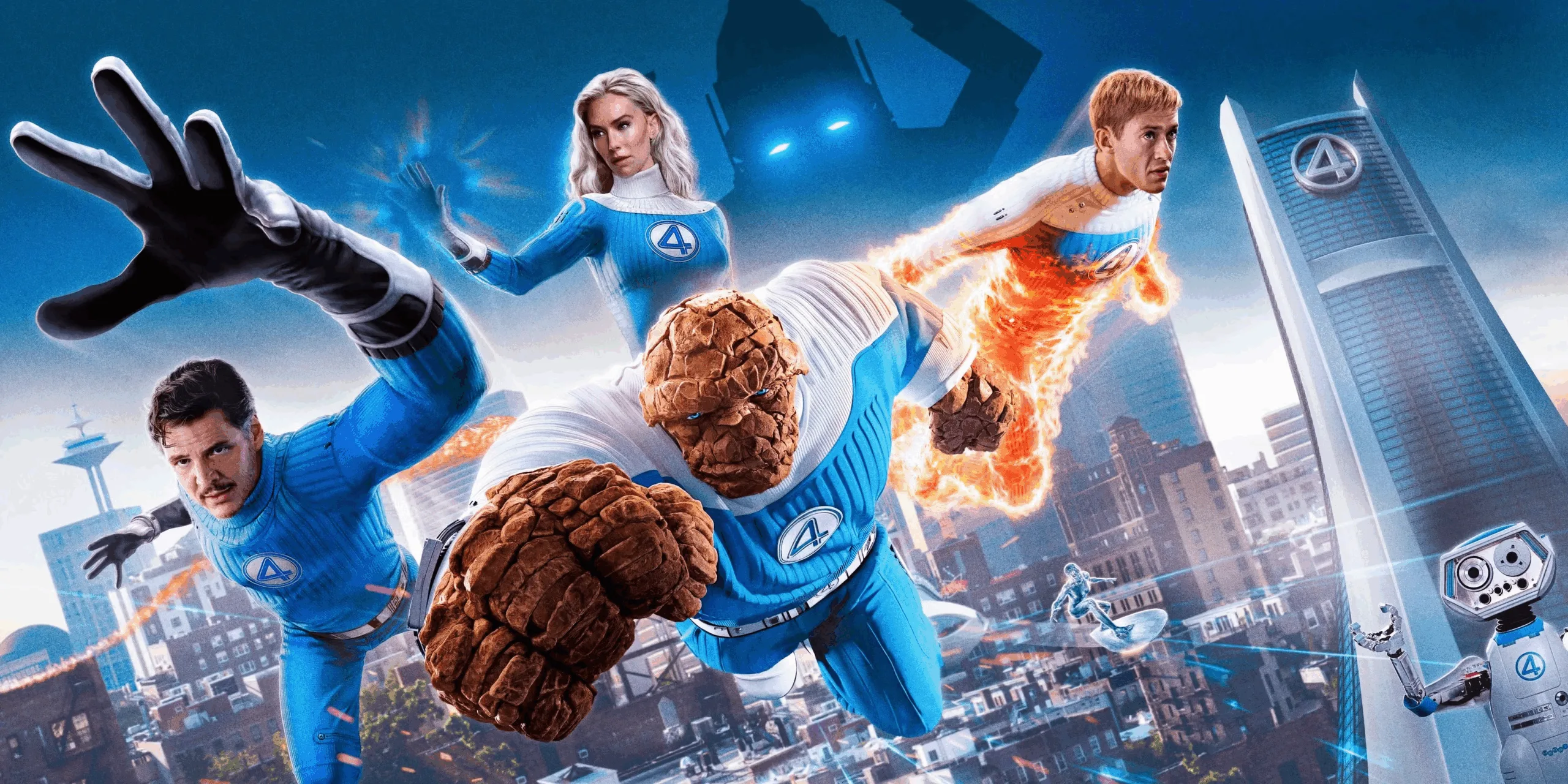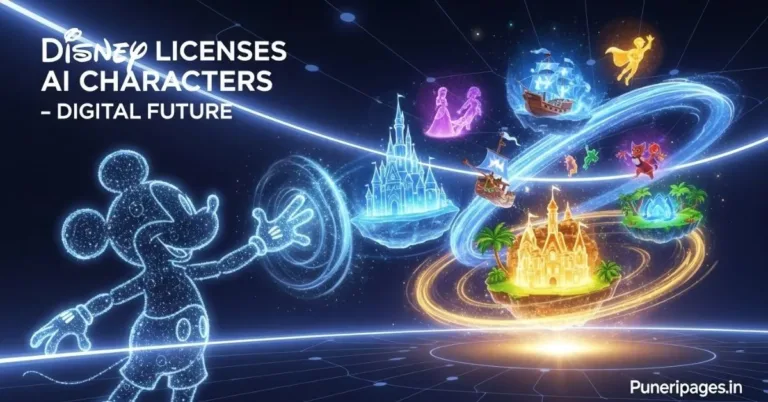
Superman flies high over Fantastic Four in superhero box office showdown.
By Prashant for PuneriPages.in
After decades of cinematic misfires and forgettable outings, Marvel Studios’ The Fantastic Four: First Steps finally delivers a version of Marvel’s “First Family” that understands what makes them special. The film succeeds not by chasing trends or adding more multiversal clutter, but by refocusing the lens on the messy, loving, brilliant dysfunction at its heart. But in its reach for cosmic grandeur, does it occasionally forget the power of its own intimacy?
Table of Contents
The Human Core: Reed, Sue, Johnny, and Ben
Unlike previous versions that treated the FF as archetypes—the nerd, the girl, the hothead, the sad rock—this film breathes human complexity into its quartet.
Pedro Pascal’s Reed Richards is less of a brash genius and more of a weary overthinker—his brain a blessing and a burden. He’s a man who calculates everything except his own emotional blind spots. Vanessa Kirby brings a quiet steel to Sue Storm, grounding the team emotionally without becoming its emotional baggage. Her invisibility powers serve as more than a gimmick—they echo her often-unseen role as mediator and conscience.
Joseph Quinn’s Johnny Storm is magnetic. He’s cocky, sure, but it’s bravado masking a deep fear of irrelevance in a team of titans. And Ebon Moss-Bachrach’s Ben Grimm—arguably the best Thing we’ve seen on screen—is all heart and haunted silence. The film gives him space to grieve his new form in one of the most poignant sequences Marvel has dared to shoot: Ben looking at his rocky form reflected in a broken piece of a space shuttle panel, a tear rolling down his cheek.
Together, they feel like a family: messy, imperfect, but bound together by a cosmic accident that makes them more than human—yet still achingly human.
The Mole Man: Tragedy in the Shadows
If the FF are about togetherness, then Mole Man (a surprisingly layered performance by Paul Walter Hauser) is a portrait of isolation. His motivation isn’t domination; it’s escape—from a world that rejected him. He’s not just a villain; he’s Ben Grimm’s mirror: another man whose body was changed beyond recognition and who was cast out as a result.
The final confrontation between Ben and Mole Man isn’t a slugfest. It’s a plea. Ben sees in Mole Man what he might become if he gives into bitterness. This emotional resonance makes the villain’s arc more than just a plot device—it’s the film’s central philosophical reflection.
Deconstructing the Climax (and What Comes After)
The climax sidesteps the usual Marvel CGI bloat. There is action, yes, but the real win comes when each member uses not just their powers, but their defining traits. Reed’s brilliance engineers the plan, but it’s Sue’s empathy that gets through to Ben. Johnny risks everything to draw away an energy core meltdown, and Ben, finally accepting his role, becomes the rock that holds the plan together—literally.
It’s not just a win—it’s a statement: This isn’t a team of superheroes. It’s a family that overcomes by being more than the sum of its parts.
And then comes the post-credits scene. Silver Surfer, silhouetted against a dying star, whispers a name we’ve been waiting for: “He is coming.”
Not just fan service—the scene reframes everything we just saw as the opening act of something much larger. Galactus looms. The Marvel Cinematic Universe is going fully cosmic. But unlike the hurried chaos of Phase 4, this transition feels earned.
Retro-Futurism and Cinematic Identity
Visually, First Steps is a stunner. Director Matt Shakman leans hard into 1960s retro-futurism—a nod to the FF’s comic book origins—without making it kitschy. Think sleek suits, analog tech with neon cores, Cold War-era spaceships. It’s a bold aesthetic that instantly differentiates the FF from the MCU’s tech-saturated sameness.
Michael Giacchino’s score blends orchestral wonder with eerie theremin flourishes—a soundscape that feels equal parts NASA launch and Twilight Zone mystery. The result? A film that looks and sounds like no other in the MCU.
Redemption After Two Decades of Misfires
To appreciate this film’s success, you have to acknowledge its ghosts. The 2005 FF movies were light but forgettable sitcoms with superhero trimmings. The 2015 reboot was a dark, joyless Frankenstein of a film that misunderstood its own characters.
The Fantastic Four: First Steps is the first FF movie that feels like a movie about the Fantastic Four, not just a movie with them in it.
What This Means for the MCU
Marvel needed this. After years of multiversal fatigue and fragmented storytelling, First Steps injects the franchise with what it’s been missing: heart, clarity, and optimism. This isn’t just setup for Galactus or the Surfer—it’s a recalibration.
More than anything, this film reminds us that while the MCU is about heroes, great Marvel stories have always been about people first.
Final Verdict
Marvel has finally done right by the Fantastic Four. First Steps is an origin story with soul, a blockbuster with brains, and a superhero film that remembers to be human. It’s not flawless—some pacing stumbles, a few heavy exposition dumps—but it’s smart, emotional, and unmistakably fresh.
If this is Marvel’s new direction, then let’s follow it—to the Negative Zone and beyond.






